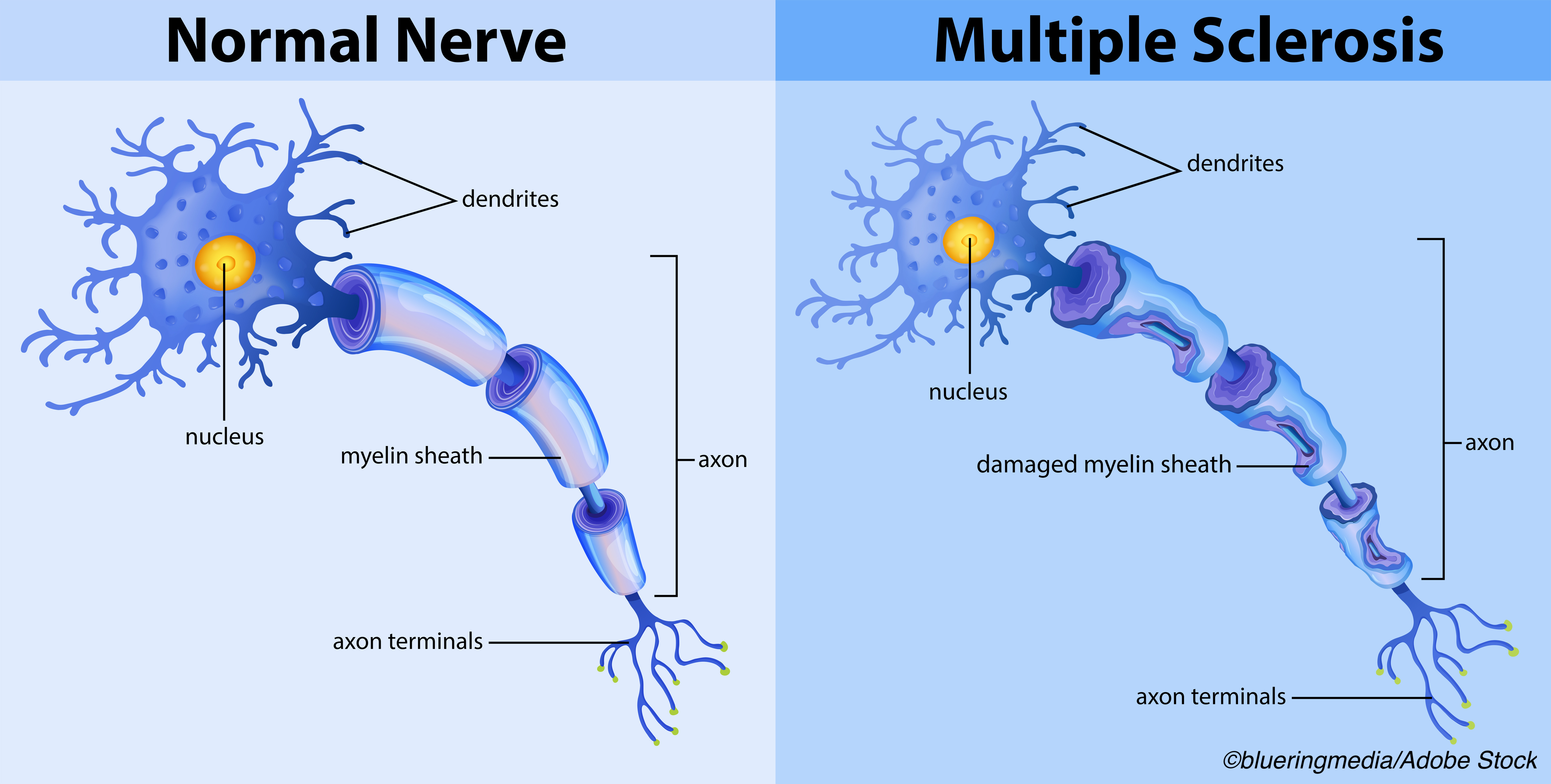Switching patients with clinically stable relapsing-remitting multiple sclerosis (RRMS) from injectable treatments to oral first-line therapies with similar efficacies — such as dimethyl fumarate (DMF) or teriflunomide (TFL) — does not raise the risk of disability, according to a study published in the Journal of Neurology, Neurosurgery, and Psychiatry.
Lead author Mathias Due Buron, MD, of the University of Copenhagen, Copenhagen, Denmark, and colleagues, explained the particular relevance and timeliness of their study.
“Previously, the injectable ’platform therapies’, which include interferon-β (IFNβ) and glatiramer acetate (GA), were the only options as first-line therapies in multiple sclerosis (MS). With the availability of newer oral first-line therapies, these drugs have become popular choices as first-line therapy or as an alternative for patients already on platform injectable therapies,” they wrote, adding that while such switches have been shown to improve clinical outcomes during active disease, their effects in clinically stable patients are “less clear.”
In this nationwide study, Buron and colleagues identified 3,206 patients with clinically stable RRMS from the Danish Multiple Sclerosis Registry. They analyzed results from two groups: patients who remained on an injectable platform therapy (IFNβ or GA; n=1,225) versus those who switched to DMF (n=318), and patients who remained on the injectable platform therapy (n=1,235) versus those who switched to TFL (n=428).
At six months, no worsening as confirmed by Expanded Disability Status Scale (EDSS) scores was observed in patients switching to DMF (HR 1.15; 95% CI 0.88-1.50) or TFL (HR 1.16; 95% CI: 0.92-1.46). The risk of any relapse showed a tendency to decrease when switching to DMF (HR 0.73; 95% CI 0.51-1.04) but tended to increase when switching to TFL (HR 1.25; 95% CI 0.96-1.63). Upon marginal structural model analyses, researchers observed similar results but found no increased risk of relapse in patients switched to TFL.
During the follow-up, 966 DMF patients and 1,030 TFL patients discontinued treatment. The cause-specific hazard ratio (HR) for treatment discontinuation due to disease activity in patients who switched to DMF therapies versus those who remained on an injectable platform therapy was 0.48 (95% CI 0.31-0.73), and in patients who switched to TFL versus those who remained on injectable treatment it was 1.28 (95% CI 0.98-1.67). Corresponding HRs for treatment discontinuation due to adverse events were 0.93 (95% CI 0.73-1.20) and 0.77 (95% CI 0.60-0.97), respectively.
“[T]he risk of treatment discontinuation due to disease activity was lower in patients who switched to DMF, and we found a statistically non-significant trend towards a higher discontinuation rate due to disease activity among patients switched to TFL. The risk of stopping treatment due to adverse events was relatively lower among patients switching to TFL,” noted Buron et al.
For marginal structural Cox modeling, Buron and colleagues included 1,420 disease stable patients on injectable platform therapy, of whom 15.6% switched to DMF and 17.6% switched to TFL during follow-up. They found that those who switched to DMF had a lower risk of a first relapse (HR 0.50; 95% CI 0.30-0.85) and a similar risk of worsening EDSS (HR 0.82; 95% CI 0.51-1.32) compared with patients remaining on injectable therapy. Patients who switched to TFL did not show any difference in the risk of first relapse (HR 0.82; 95% CI 0.49-1.35) or EDSS worsening (HR 0.87; 955 CI .52-1.47).
Researchers also analyzed results in RRMS patients who were less than 40 years old, including 463 patients from the DMF and 483 patients from the TFL analyses. In the DMF cohort, risk of six-month EDSS worsening in patients who switched therapies versus those who stayed was similar to those seen in the main analysis (HR 1.29; 95% CI 0.82-2.03); however, researchers found a sharper decline in their risks of a first relapse (HR 0.52; 95% CI 0.28-0.95). In the TFL group, the risk of worsening EDSS was increased in patients who switched treatment (HR 1.54; 95% CI 0.99-2.40), while the risk of first relapse was similar to those from the primary analysis (HR 1.29; 95% CI 0.82-2.02).
“In conclusion, we found no increased risk of relapses, EDSS worsening or discontinuations due to disease activity in clinically stable patients who chose to switch treatment from IFNβ/GA to DMF. Patients switching to TFL did not experience an increased risk of EDSS worsening but may be at a slightly increased risk of relapse and discontinuation due to disease activity, although the magnitude of this risk-increase is negligible. Special consideration in younger patients is warranted. Overall, in patients treated with injectable MS therapies and no recent evidence of MS activity, switching to first-line oral DMTs for convenience can be viewed as a safe strategy,” concluded Buron and colleagues.
The primary limitation of the study, as noted by these researchers, was the lack of available MRI data.
-
Switching from injectable platform therapies to oral first-line therapies in patients with clinically stable relapsing-remitting multiple sclerosis (RRMS) does not increase the risk of disability.
-
Researchers found no increased risk of relapses, EDSS worsening, or discontinuations due to disease activity in patients who switched from IFNβ/GA to dimethyl fumarate and only slightly increased risks of relapse and discontinuation in those switching to oral teriflunomide.
Liz Meszaros, Contributing Writer, BreakingMED™
Buron reported receiving non-financial support from Roche outside of this work.
Cat ID: 36
Topic ID: 82,36,730,36,192,925



